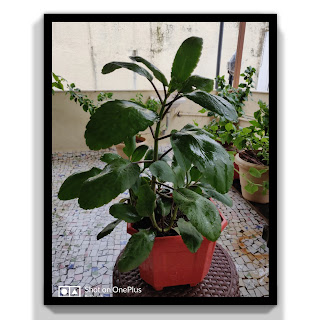How to Care and Propagate: Panfuti Plant (Bryophyllum Pinnatum)

Introduction: In India, Bryophyllum pinnatum(Scientific Name) plant is known as Panfuti or Patharchur Plant. Also known as “Miracle Leaf”, “Leaf of Life” and “Wonder of the World”. “Bryo” means sprout and “phyllum” means leaf. The plant that sprouts or grows from its leaves is called as Bryophyllum. This plant is native to Madagascar. Panfuti Plant is a succulent perennial herb, which grows up to 1m- 2m in height. The stems are thick, flexible and short and the flowers are pink, white or purple in colour. It is grown in the garden for ornamental purposes. Soil & Climate: Use potting mix of 20% compost, 50% gardening soil and 30% perlite or river sand. Succulent’s plant require well drained pot. It does not require very regular fertilization, but it is advisable to feed twice in year with an all-purpose fertilizer. This plant grows in tropical, sub-tropical and warm temperate climatic zone. Light requirement: It grows well in direct sunlight of 5~6 hours daily. Water Techniq...




